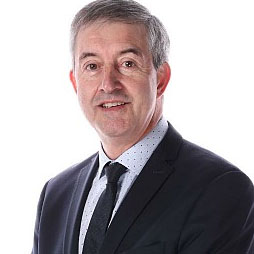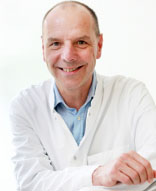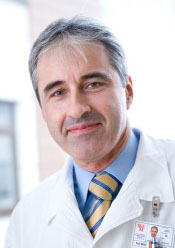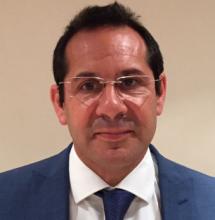Roundtable Discussion: Arrhythmia & Electrophysiology
Published: 07 July 2015
-
Views:
 107
107
-
Likes:
 7
7
-
Views:
 107
107
-
Likes:
 7
7
-
 Part 6 | Session 1 RISK STRATIFICATION – PART 1
Part 6 | Session 1 RISK STRATIFICATION – PART 1 -
 Part 6 | Session 2 RISK STRATIFICATION – PART 2
Part 6 | Session 2 RISK STRATIFICATION – PART 2
-
 Part 1 REFERRAL PATHWAYS IN EUROPE Angelo Auricchio, Hein Heidbuchel, Gerhard Hindricks, Josef Kautzner, Pier D Lambiase, Mark O'Neill, Richard Schilling
Part 1 REFERRAL PATHWAYS IN EUROPE Angelo Auricchio, Hein Heidbuchel, Gerhard Hindricks, Josef Kautzner, Pier D Lambiase, Mark O'Neill, Richard Schilling
-
 Part 2 NEW TECHNOLOGIES IN ABLATION Angelo Auricchio, Hein Heidbuchel, Gerhard Hindricks, Josef Kautzner, Pier D Lambiase, Mark O'Neill, Richard Schilling
Part 2 NEW TECHNOLOGIES IN ABLATION Angelo Auricchio, Hein Heidbuchel, Gerhard Hindricks, Josef Kautzner, Pier D Lambiase, Mark O'Neill, Richard Schilling
-
 Part 3 APPROACHES TO ABLATION PART 2 – RADIOPROTECTION Angelo Auricchio, Hein Heidbuchel, Gerhard Hindricks, Josef Kautzner, Pier D Lambiase, Mark O'Neill, Richard Schilling
Part 3 APPROACHES TO ABLATION PART 2 – RADIOPROTECTION Angelo Auricchio, Hein Heidbuchel, Gerhard Hindricks, Josef Kautzner, Pier D Lambiase, Mark O'Neill, Richard Schilling
-
 Part 4 ATRIAL FIBRILLATION – RATE VERSUS RHYTHM Angelo Auricchio, Hein Heidbuchel, Gerhard Hindricks, Josef Kautzner, Pier D Lambiase, Mark O'Neill, Richard Schilling
Part 4 ATRIAL FIBRILLATION – RATE VERSUS RHYTHM Angelo Auricchio, Hein Heidbuchel, Gerhard Hindricks, Josef Kautzner, Pier D Lambiase, Mark O'Neill, Richard Schilling
-
 Part 5 | Session 1 AF ABLATION – PART 1 Angelo Auricchio, Hein Heidbuchel, Gerhard Hindricks, Josef Kautzner, Pier D Lambiase, Mark O'Neill, Richard Schilling
Part 5 | Session 1 AF ABLATION – PART 1 Angelo Auricchio, Hein Heidbuchel, Gerhard Hindricks, Josef Kautzner, Pier D Lambiase, Mark O'Neill, Richard Schilling
Overview
To mark the launch of Arrhythmia & Electrophysiology Review (AER), Radcliffe Cardiology in association with the European Heart Rhythm Association and doctors.net.uk, presents the first in a series of height video shorts from the Arrhythmia & Electrophysiology Round Table.
The Round Table videos comprise salient discussion and practical support for professionals concerned with the treatment of arrhythmias in Europe.

Target Audience
This round table discussion is intended for an international audience, specifically:
- Electrophysiologists, cardiologists and allied healthcare professionals seeking to improve their knowledge of heart rhythm disorders.
- Cardiologists
- Allied healthcare professionals seeking to improve their knowledge of heart rhythm disorders.
Key Learning Objectives
The assigned learning objectives for this roundtable are:
- Increase physician awareness on heart rhythm disorders
- Encourage development of the referral pathway between cardiologists and EPs
- Discuss novel and emerging technologies being utilised in the EP lab
- Assess risk stratification for CRT non-responders
- Consider radiation dose reduction strategies for EPs
More from this programme
Part 1
SESSION 1
| 1 session | |
| REFERRAL PATHWAYS IN EUROPE | Watch now |
Part 2
SESSION 2
| 1 session | |
| NEW TECHNOLOGIES IN ABLATION | Watch now |
Part 3
SESSION 3
Part 4
SESSION 4
Part 5
SESSION 5
Part 6
SESSION 7
Faculty Biographies

Angelo Auricchio
Director of the Clinical Electrophysiology Unit
Angelo Auricchio is director of the Clinical Electrophysiology Unit at Fondazione Cardiocentro Ticino, Lugano, Switzerland, and Professor of Cardiology at University Hospital in Magdeburg, Germany. Prof. Angelo specialises in ventricular arrhythmias and sudden cardiac death.

Hein Heidbuchel
Professor and Chair of Cardiology
Dr Hein Heidbuchel is a Professor and Chair of Cardiology at Antwerp University,Belgium. He is also guest Professor at Hasselt University. He is President of the European Heart Rhythm Association (2018–2020).
Dr Heidbuchel worked as Research Fellow of the NIH and Fogarty International at the University of Oklahoma (1993–1994) and was Fundamental Clinical Investigator of the Fund for Scientific Research Flanders from 1996 until 2006. He started as Professor of Cardiology – Arrhythmology at the University of Leuven, Belgium in 1994. In October 2016, he became the Chair of Cardiology at Antwerp University.

Gerhard Hindricks
Gerhard Hindricks is a professor of cardiology at the University of Leipzig, Leipzig, Germany. He heads one of the largest electrophysiology departments in Europe, providing services for up to 5,000 patients and performing almost 2,500 interventions for arrhythmias each year.

Josef Kautzner
Professor of Medicine
Josef Kautzner is a Professor of Medicine at Charles University Medical School I in Prague, Czech Republic. A specialist in cardiology and electrophysiology, he is a Fellow of the European Society of Cardiology and a member of the Heart Rhythm Society (HRS) and the European Heart Rhythm Association. He is also Chairman of the Working Group on Arrhythmias and Cardiac Pacing of the Czech Society of Cardiology. His clinical and research interests include prevention of sudden cardiac death, catheter ablation of different arrhythmia substrates and cardiac resynchronisation therapy.

Pier D Lambiase
Consultant Cardiologist
Prof Pier Lambiase is a consultant cardiologist specialising in the treatment of heart rhythm disorders and pacemaker implantation. He graduated from Oxford University in 1992 and trained in cardiology at St Thomas’ and Hammersmith Hospitals. Following completion of a PhD in 2002, he undertook higher specialist training in electrophysiology and became a consultant cardiologist and senior lecturer at the Heart Hospital, UCL in 2006 and was promoted to reader in cardiology in 2012.
He was the British Cardiac Society Young Investigator in 2002 and finalist in the North American Pacing & Electrophysiology Society Young Investigator competition in the same year. He was awarded the British Cardiovascular Society Early Career Award for his research in 2015 and elected Fellow of the Heart Rhythm Society the same year.
Prof Lambiase conducts research into the causes and treatment of inherited rhythm disturbances, sudden arrhythmic death syndrome and family screening. He…

Richard Schilling
Consultant Cardiologist
Prof Schilling has been a consultant cardiologist at St Bartholomew’s and the Royal London NHS trust since 2001. He was appointed as chair in cardiology and electrophysiology in 2009. His current practice involves all aspects of electrophysiology and management of cardiac arrhythmia including catheter ablation, implantation of pacemakers and cardiac defibrillators, and cardiac resynchronization therapy for heart failure patients.
Prof Schilling was part of the team that lead the merger of the Heart and Barts hospitals which is one of the largest heart centers in Europe. He is the Strategy Director for Barts Hospital, the Medical Director for the Arrhythmia Alliance and President-Elect for the British Heart Rhythm Society.







